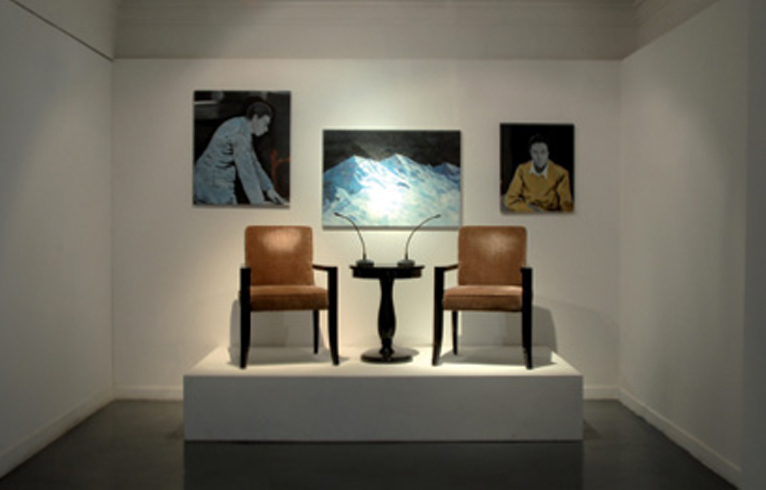THE PERSONAL IS PUBLIC
| October 22, 2011 | Post In LEAP 10

There will always be artists who move from private dwelling to town square, from self to public: artists who make speeches, who show their works, who focus on the public dimension of art. This phenomenon is not limited by generation, as evidenced by the work of three young artists participating in “The Personal Is Public.” Although the works in this group exhibition extend in different directions, they share a common trait in that none of their makers— in spite of their youth— shy away from consideration of the public realm.
Chen Zhou’s video piece Wake up, my son, you’re still in dream conceives of a father and son each lost in reverie. The frail boy’s lips wriggle as if he is chanting an incantation. The lens shifts— he pinches his father’s skull between his fingers, as if interfering with the fate of his life. Sickness creeps up as slowly as a snail. Blisters flare up on the father’s forehead, a sneer hangs off the corner of his mouth, and in his son’s mind, he is dead. The camera shakes in precise imitation of the subtle palpitations and contractions of a hanged man. Cold light illuminates the father’s face; his pants are down to his ankles, the black and blue hem of his Chinese tunic just barely covering his private parts. Water from an unknown source accumulates in a puddle on the floor, as if the son were a legacy left by his father’s body as a small pool of water is left by the rain. But then again the father may not have died: when the story ends, the son— once recumbent in a corner of the white wardrobe— clings to his father’s leg, curled and kneeling, his face serene.
Zheng Huan’s installation, titled Disappeared River, is somewhat more abstract. One edifice mirrors fascist architectural concepts with huge structures, tiny arches, and an incline that seems to reach unattainable heights. Meanwhile, the installation itself comes across as tough and intrepid, a product of crisply textured plaster. Another crude wax variant of this is overturned and askew, as before cooling the model was “toppled”: “the will of the people” seems to have hedged yet another “triumph of the will.” Zheng exposes the fate of these two models by way of implicit reference, through architectural symbol and texture. They all lie on bases constructed atop long, frail wooden paling in what feels like a dangerously precarious mid-air suspension.
The landscape of official media dialogue is always set in relief against the torturously meandering grand spectacle that serves as its foil. This is a space shaped by a distinct aura of “incommunicability,” one that lurks both within the state system and the political system. It thus follows that in his work The Difficulty of Meeting, Li Ran has conceived of a site for “dialogue” whose backdrop appears to act as a metaphor for obstacles to communication inherent in the context of the present system. Meanwhile, an unoccupied sofa awaits, the scene of empty eye contact between interlocutors that never was. Not one detail is spared in reference to the inauthenticity and emptiness of this so-called “dialogue.”
This “barrier,” much like a kind of karmic retribution, is a phenomenon that cycles back and forth between the individual and the public. Whether with regard to the ethical principles implicit in blood ties between father and son, a “two-man” act masked by one political face, or the sham of an imperial court colloquy— a hypothetical “silken tongue” cannot possibly serve as a channel for true communication. Without a doubt, every artist here exposes the innate existence and inevitability of this “barrier.” On a deeper level, “The Personal Is Public” is equal to a sort of voluntary confession to artistic “ontology”: after all, for the artist, any instance of self-exposure is a subcutaneous injection into public opinion. Yuan Jing (Translated by Katy Pinke)

